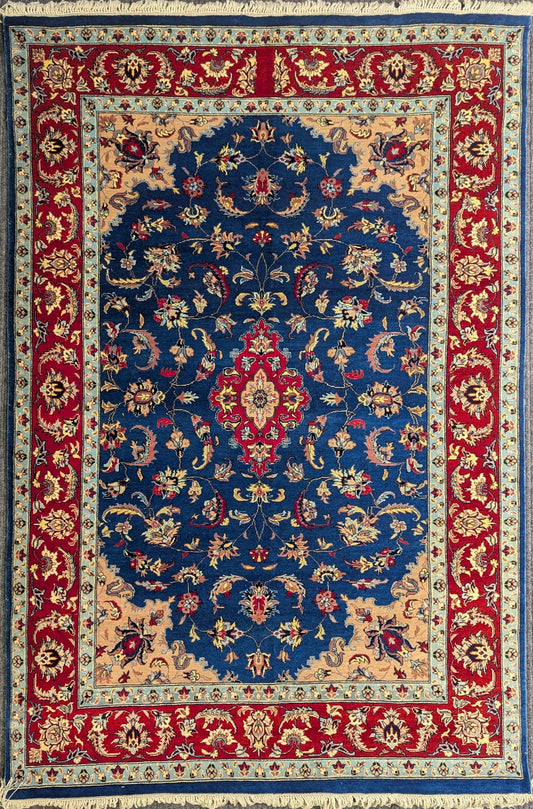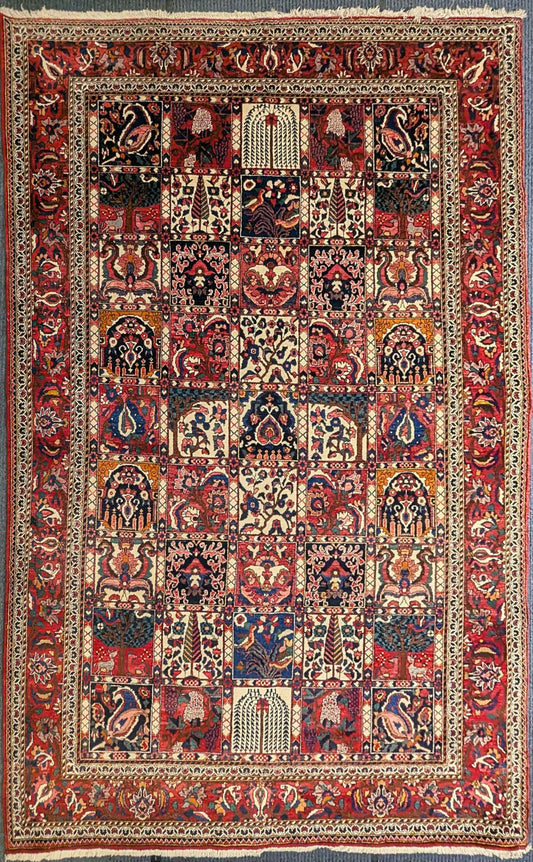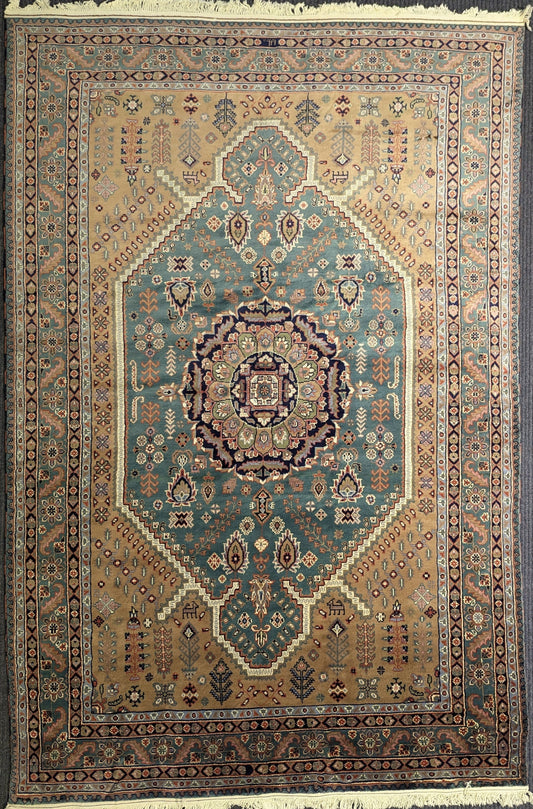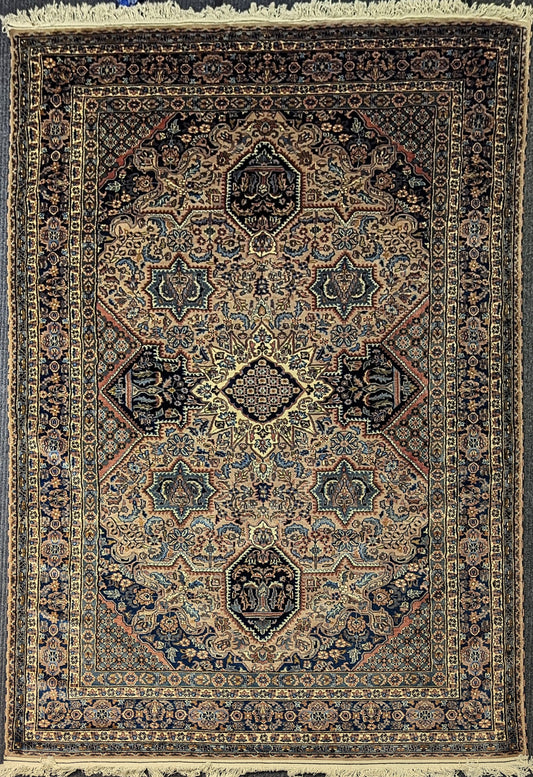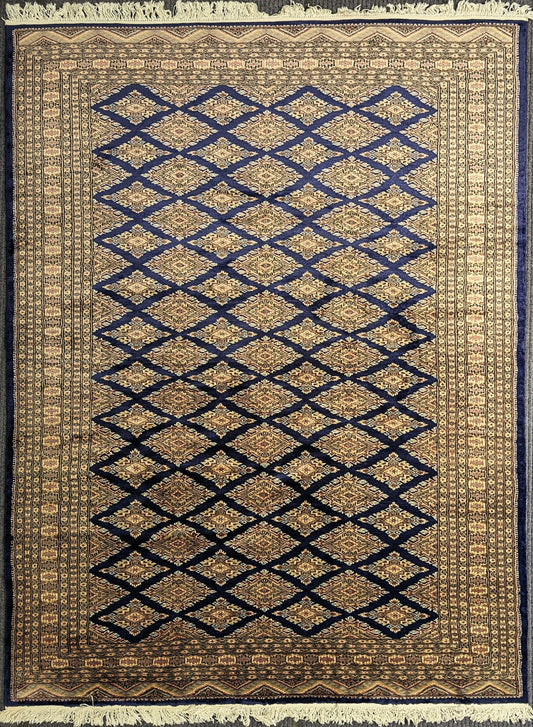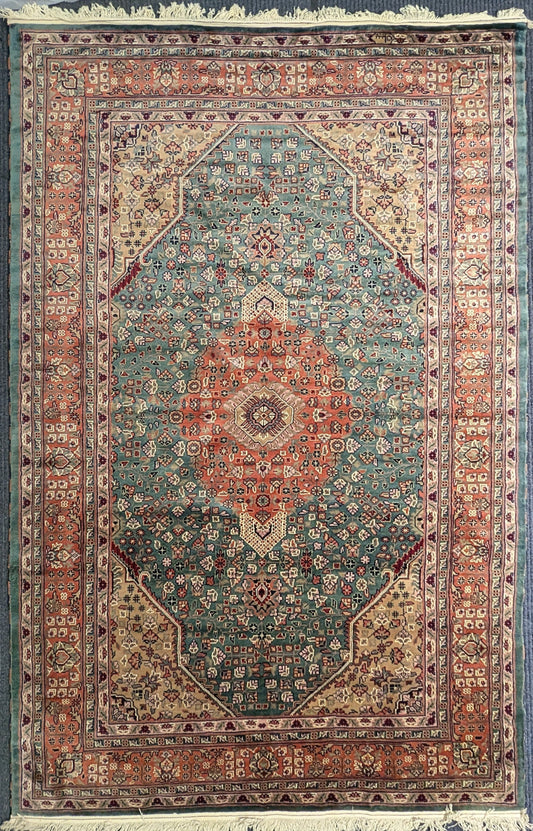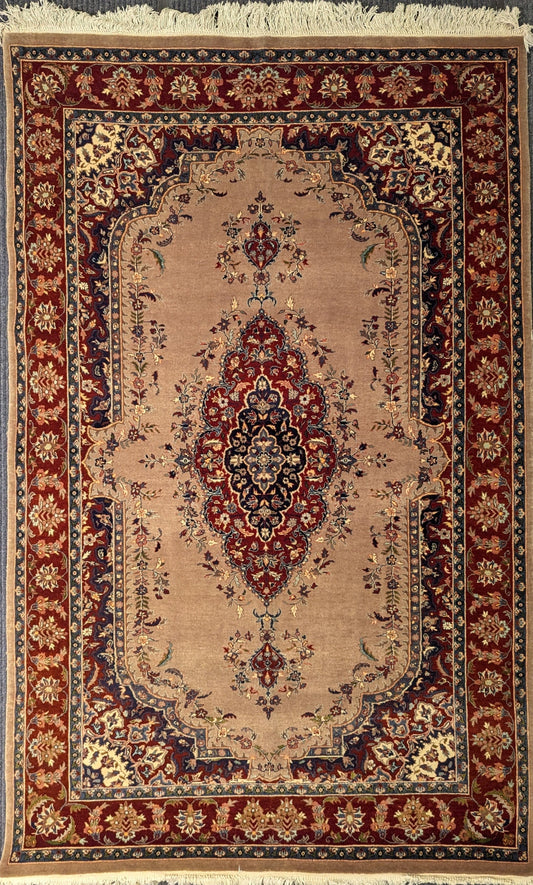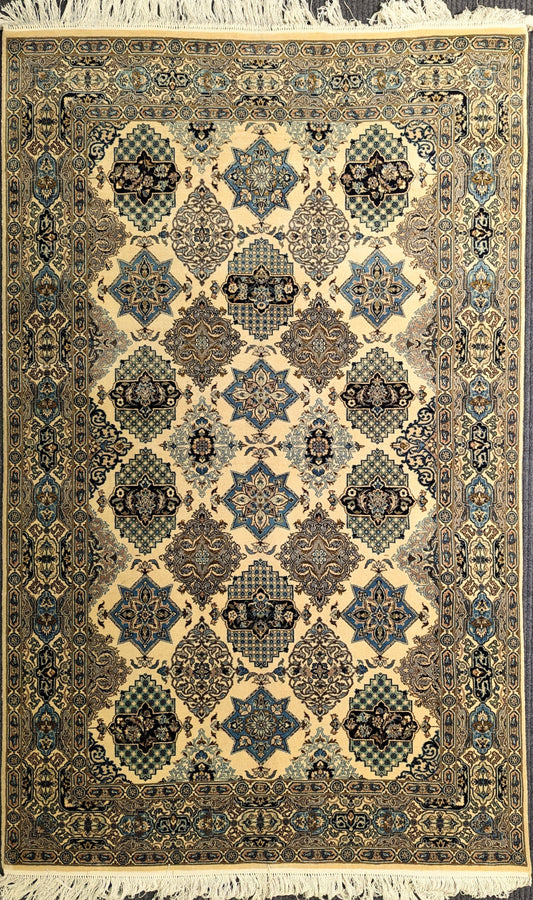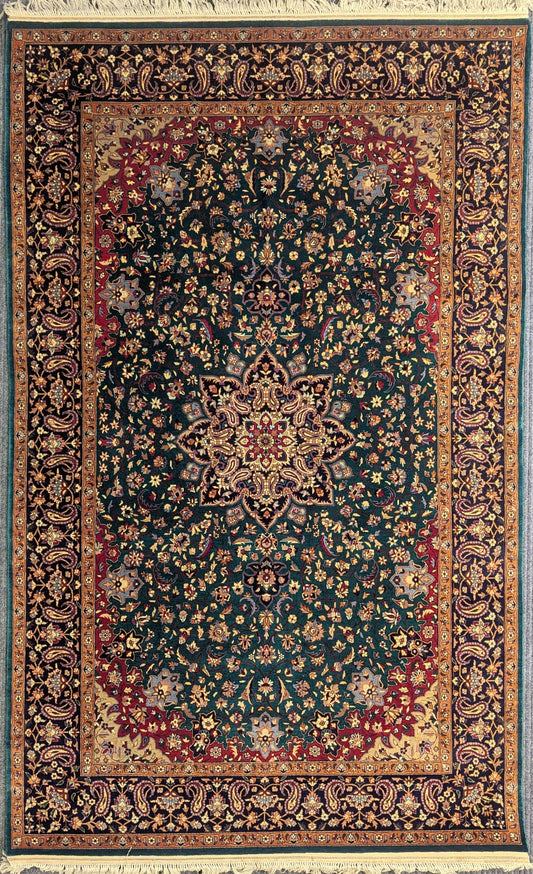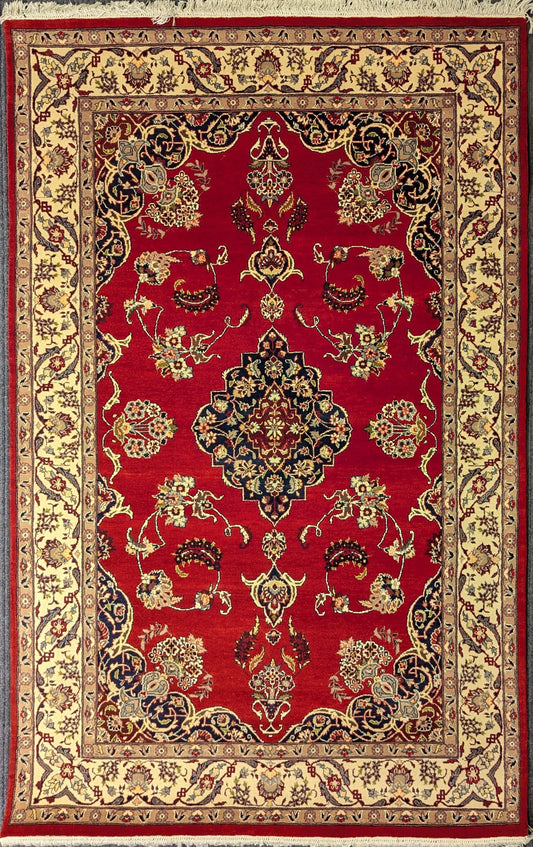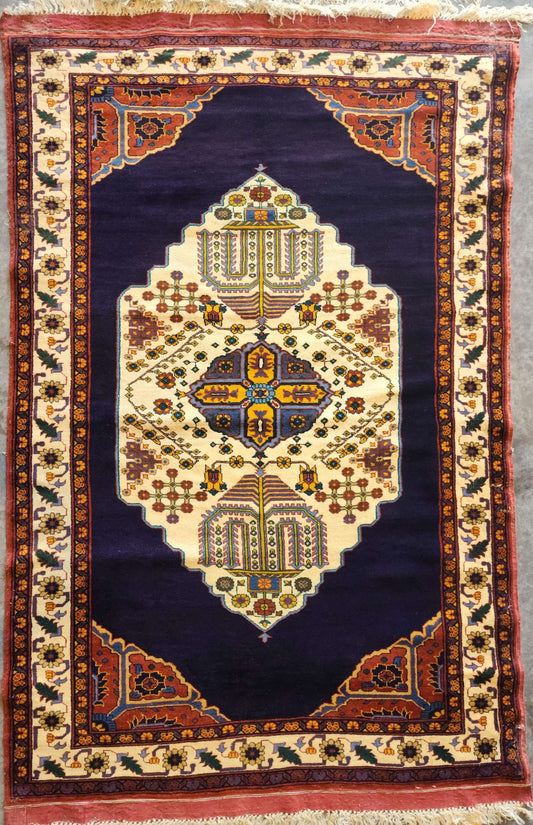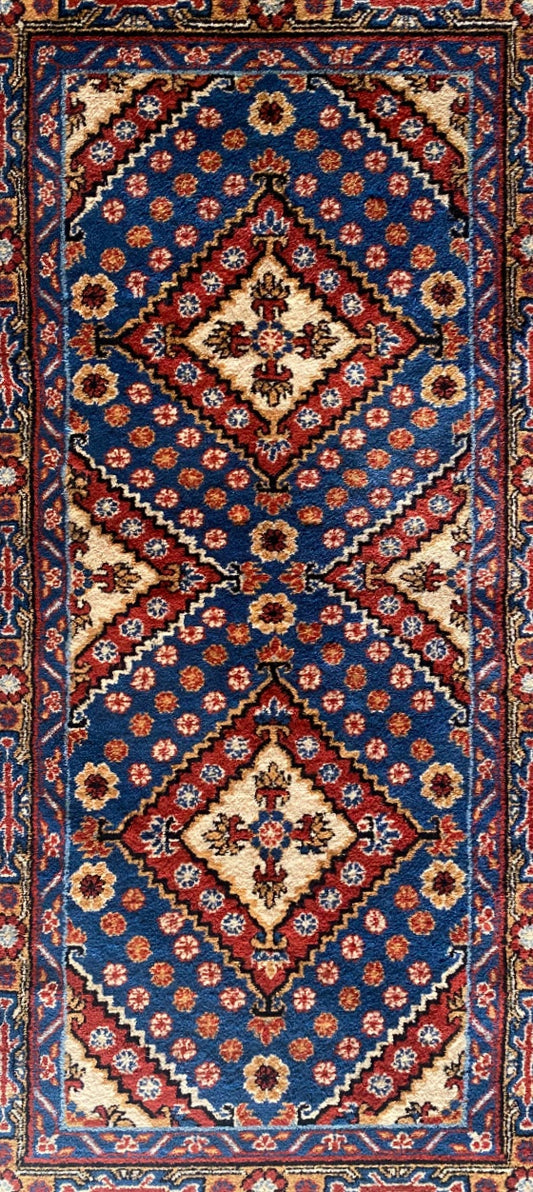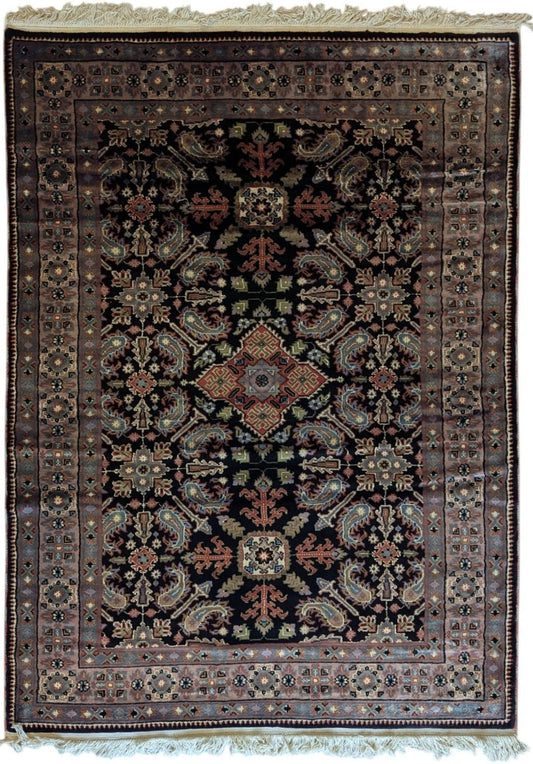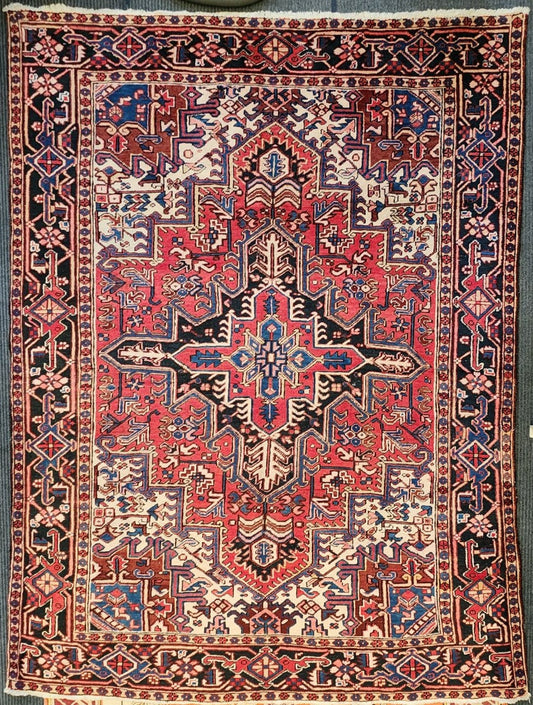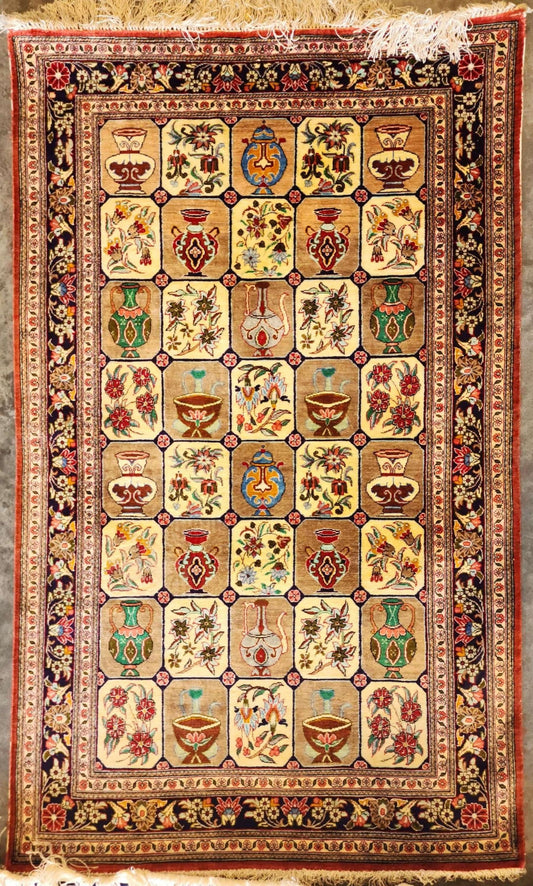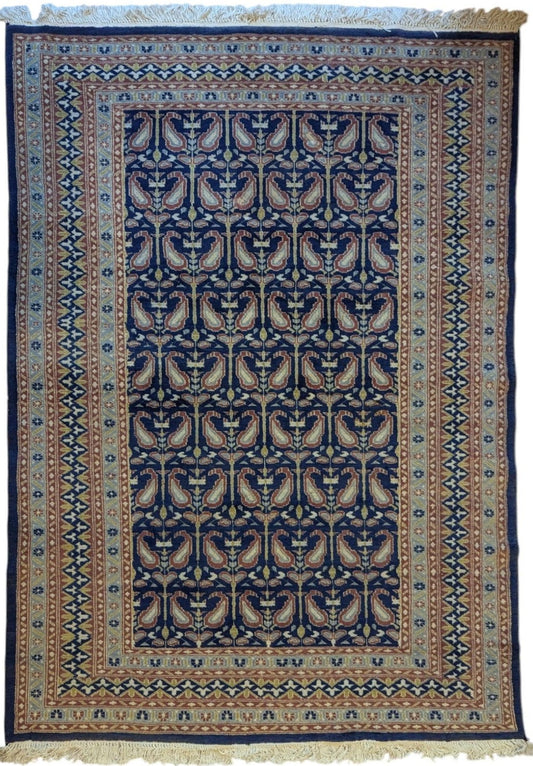Persian Rugs: Timeless Art & Cultural Heritage
Persian rugs are renowned worldwide for their intricate craftsmanship, rich symbolism, and cultural depth. Hand-knotted across various regions of Iran, these carpets are not only beautiful floor coverings but also enduring works of art, each telling a unique story through pattern and color.
Each region brings its own signature style:
Kashan rugs feature central medallions and fine floral detailing in deep reds and blues.
Tabriz is known for complex designs, including hunting scenes and palatial motifs.
Isfahan carpets offer high knot density and symmetrical arabesques in silk and wool.
Qom rugs, often woven in pure silk, are famed for their luxurious texture and fine detailing.
Nain rugs blend soft ivory and blues with delicate floral work.
Bakhtiari rugs, woven by tribal communities, are easily recognized by their bold colors and the iconic Khesti (garden panel) design — a grid of individual squares depicting animals, flowers, or vases. These designs reflect tribal life, nature, and harmony.
Qashqai rugs are tribal handwoven carpets from southwestern Iran, known for their bold geometric designs, rich colors, and durable wool. They reflect the nomadic culture of the Qashqai people.
Shiraz carpets are hand-knotted tribal Persian rugs from southern Iran, featuring bold geometric designs and earthy colors. They reflect the nomadic heritage of tribes like the Qashqai and Luri.
Persian rug designs include:
Medallion layouts, All-over floral fields, Tree of Life, Chahar Bagh (Garden of Paradise) & Animal and hunting scenes
Made from high-quality wool, silk, or blends, and dyed with natural pigments, Persian rugs are both durable and collectible. Whether for contemporary or traditional interiors, they offer unmatched elegance, craftsmanship, and cultural significance.

